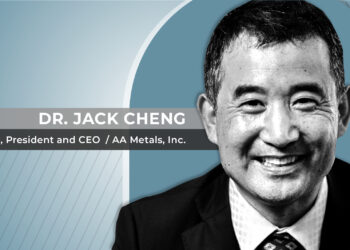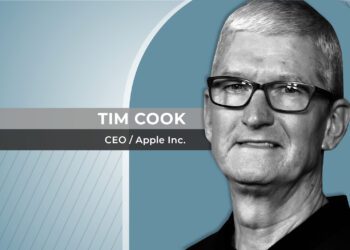John Schultz, president of Centrica North America and Direct Energy Business, sees affordability, sustainability, and resiliency as the way ahead.
With twenty-five years’ experience in the energy industry, John Schultz has lived through plenty of change in the sector, but as president of Direct Energy Business, he is leading a company with a clear and innovative plan for the future. “I was leading Hess’s energy marketing business when it was acquired by Direct Energy in 2013,” Schultz told CEO Magazine on his reasons for joining the company. “I could tell that it was going to be an exciting opportunity, to combine the scope and capabilities of the new enterprise.
I jumped at the chance to build an industry leader in competitive energy that would provide customers with new and innovative products and services.”
Direct Energy was founded in Toronto in 1986 and was acquired by Centrica, the UK-based parent of British energy retailer British Gas, in 2000. Today, Direct Energy Business (DEB) together with its affiliate Direct Energy, which serves homeowners and small businesses, is the second largest competitive energy retail company in North America, serving over 4 million customers in the United States and Canada. Centrica’s current plans for North America include not only growth aspirations for both of their energy supply businesses, but a desire to provide a full suite of energy solutions to business customers. After several years of smaller acquisitions and capability building, Centrica launched Centrica Business Solutions in the North America market to provide distributed energy solutions to larger business customers.
Schultz believes that Direct Energy/Centrica is well positioned to deliver against the three core needs or dimensions that business customers are focused on in the current energy environment: affordability, sustainability, and resiliency.


Affordability, sustainability, and resiliency
“Of course, businesses want budget certainty, they want their energy to be affordable, and they’re always focused on the bottom line,” Schultz insisted. “The other conversation, increasingly, is around sustainability. We see more and more companies considering how their energy usage, energy purchases, and their deployment of renewable energy fits into their corporate goals and brand.”
“And finally, resiliency. It’s probably the least talked about, but it’s an absolutely critical aspect in many industries, whether it’s the grocery business or healthcare. Disruptions to the power supply can have a significant impact on business, and so resiliency is a big part of the energy equation. When you talk to businesses, you’re really trying to help them solve where they need to be in terms of affordability, sustainability, and resiliency. I think that today we have a robust set of capabilities and products to help customers find the right mix.”
Deploying technology
When it comes to operational standards and increasing efficiencies, Schultz stressed that in the short term the area Direct Energy is focused most heavily on is its utility and customer operations. He says the company approaches opportunities in efficiency across three dimensions: systems, people, and processes. This approach enabled Direct to launch a robotic process automation (RPA) program which has allowed the company to transition its employees from carrying out routine tasks to more value-added activity.
“Those three dimensions refer to the systems we have that support our activities, what kind of talent and capabilities we need to be successful, and how many people; and of course, the processes we employ in getting there,” Schultz explained. “The approach that we’ve taken is we have a lean, multi-disciplinary internal group called Process Excellence who look across our key business processes to identify opportunities across those dimensions.
“The group helped us launch a robotic process automation (RPA) program last year. We ran a pilot in 2018 where we focused on using RPA as a very simple solution to help us save time, and we set a target for ourselves of saving 12,000 hours of manual labor. We actually exceeded that, saving 18,000. We’ve set an objective to double that in 2019, and I think as we sit here today, we probably have somewhere around 30-40 different RPA bots embedded in different parts of the organization.”
Setting themselves apart
Schultz believes one of the main differentiators for Direct Energy Business in its marketspace is its sheer geographic reach. The company currently serves over half a million different utility business accounts in 23 US states and 8 Canadian provinces, yet Schultz still sees considerable potential to expand in states such as Arizona, Virginia, and California, where regulatory changes are opening up new opportunities.
“As you can imagine, we operate in a number of different markets and the rules are different in each of those markets, so that introduces a level of complexity that we have to manage inside the business in order to be successful,” he said. “Some energy companies are very specific in terms of only focusing on one discipline or in one geography, and we find companies that we work with often want to have a single partner in the energy space to help them satisfy all of their needs. We are well positioned in terms of the size and scale of the company to do just that.
“The second thing, which is also very important, is actually having the capabilities to deliver against the core needs of business customers. In the renewable energy space, for example, we have expertise in a number of different structures where we can provide businesses with products that help them satisfy their sustainability goals. Companies come at the sustainability challenge differently, based on their needs, and we are the right partners to help them find the solutions that best fit their goals.”


Key partners
Schultz cited two distinct types of key partners for Direct Energy Business, first, fellow players in the energy sector, and secondly, companies in the technology realm. Alongside longstanding relationships in the energy and finance sectors, with the likes of Equinor and Equitable Resources, Direct Energy Business considers giant tech firms, such as IBM and Amazon strategic partners. The range of services offered by these partners includes but is not limited to helping DE manage its computer servers, databases, data centers, cloud computing, data analytics, as well as managing its applications and RPA initiatives.
“Beyond the obvious benefit to cost, I think that if you can develop a strategic partnership with somebody, then you’re talking about a partner who can really understand your business and the outcomes you’re trying to achieve,” Schultz emphasized. “Let’s take Cognizant, for example. They help us manage some of our core applications. A lot of their employees have become embedded in our business. That kind of relationship requires a level of understanding and coordination around our business that helps us develop new solutions for customers.
“When we say strategic, it really implies that your partner has capabilities that perhaps your organization does not have internally. That the relationship is going to be long term in nature, and that there is an alignment with what we’re both trying to achieve.”
Ultimately, Schultz sees Direct Energy as a one-stop energy partner for companies to enable them to manage their energy needs across the three dimensions of affordability, sustainability, and resiliency, and believes his company has the capabilities and strategic supply chain to satisfy those demands.
“For example, if you’re in the steel industry, you make steel; if you’re in healthcare, you’re providing health benefits,” he insisted. “Those customers can’t go to 50 or 100 different energy companies to solve all their individual energy needs. So we want to be their one-stop strategic energy partner and manage all the upstream complexity on their behalf.”












